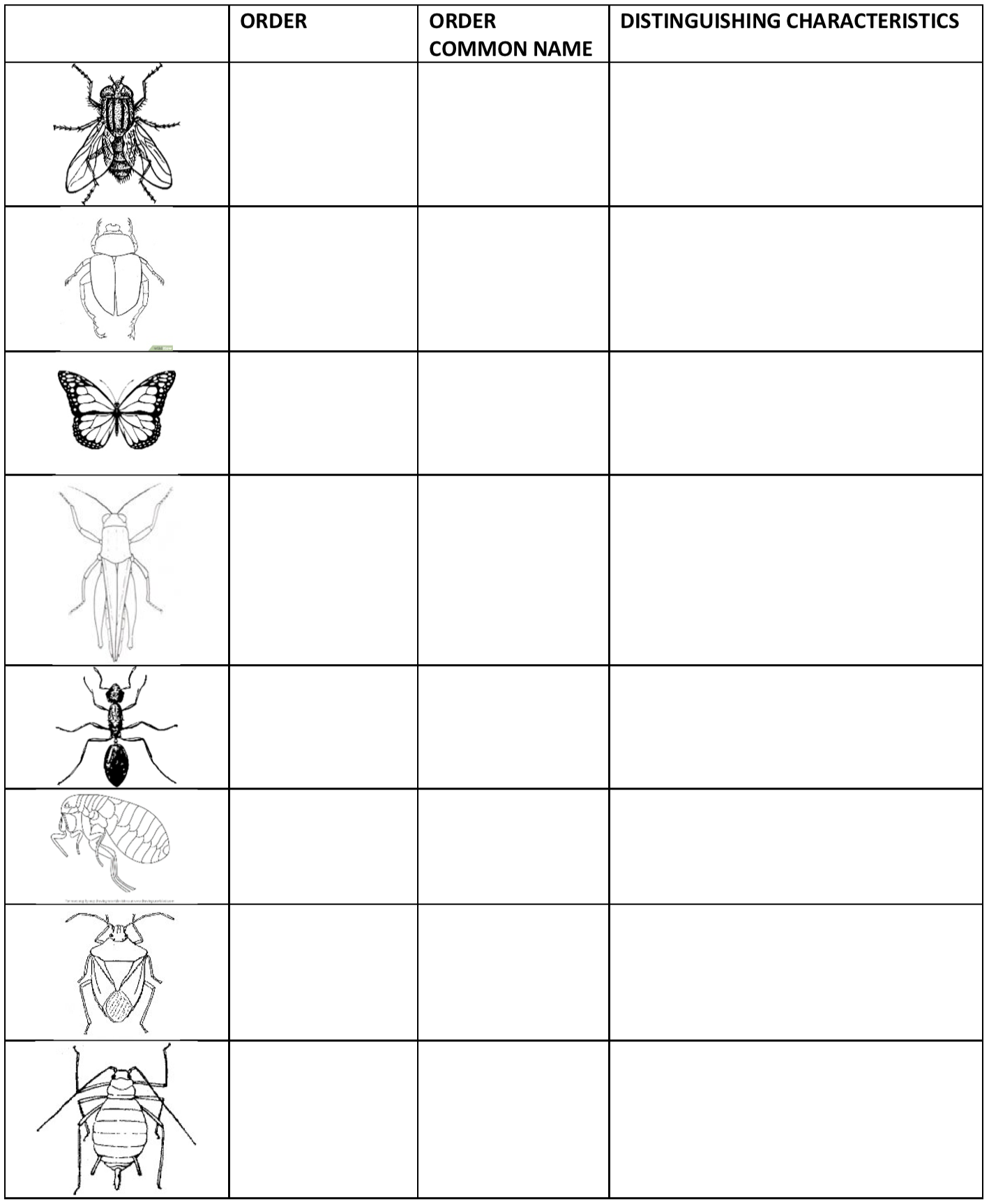Lab 1 Assignment: Arthropod Classification
Name: ________________________________
Hierarchical Classification System
Classification systems enable us to impart order to a complex environment. In biology, organisms may be grouped according to their overall similarity (a classification method known as phenetics) or according to their evolutionary relationships (a classification system known as cladistics). Most modern scientists tend to adopt a cladistic approach when classifying organisms.
In biology, organisms are given a generic name (reflecting the genus of the organisms), and a specific name (reflecting the species of the organism). A genus is a group of closely related organisms. Genera which are closely related are grouped into a higher (less specific) category known as a family. Families are grouped into orders, and orders into classes. Classes of organisms are grouped into phyla, and phyla are grouped into kingdoms. Domains are the highest taxonomic rank of organisms.

Glossary of Phylogenetic Terms
Phylogeny: interrelationships of organisms based on evolution
Systematics: the study of the diversity of organisms, which attempts to organize or rationalize diversity in terms of phylogeny
Taxonomy: the technical aspects of systematics, dealing with the formal description of species, establishing rankings of groups, and general principles of classification and naming
Phylogenetic Tree (cladogram): a diagrammatic representation of the presumed line of descent of a group of organisms. Thus, a phylogenetic tree is actually a hypothesis regarding the evolutionary history of a group of organisms.
Monophyletic Group (Natural Group, or Clade): a group of taxa which share a derived character. This is the only grouping which is considered relevant to phylogenetic classification.
Paraphyletic Group: a group of taxa which share a primitive character, thus an artificial group.
Polyphyletic Group: a group of taxa which share a convergent similarity, thus an artificial group.
The Arthropod Phylum
Phyla a major groups of organisms. Insects are a Class in the Phylum Arthropoda. Characteristics of arthropods include:
- Segmented bodies 2. Jointed legs 3. Exoskeleton
- Open circulatory system 5. Invertebrate 6. Bilateral Symmetry
Observe the live and preserved specimens on display in the laboratory. Compare and contrast the major Arthropod classes in the table:
| Antennae (#) | Eyes
Compound/Simple |
Legs (#) | Segmentation (#) | Mouthparts (Chew/suck) | |
| Arachnida |
|
||||
| Malacostraca |
|
||||
| Diplopoda |
|
||||
| Chilopoda |
|
||||
| Insecta |
|
Create a Phylogenetic Tree illustrating the taxonomic relationships for the following Arthropod groups: Chilopoda, Diplopoda, Arachnida, Insecta, Araneae, Acari, Opiliones, Coleoptera, Odonata, and Collembola.
There are roughly 32 Orders in the Class Insecta. We will go through a brief overview of the major orders as a group. As we go through, identify each of the photos below with the correct Order, Order common name, and at least 2 physical characteristics that separates that Order from the others.

EQUIPMENT CHECK-OUT
Net Number: ___________ (40)
Kit Number: ___________
Check each item after making sure it is included in your kit:
_____ Forceps (20)
_____ Paintbrush (5)
_____ Styrofoam (5)
_____ Pinning Block (20)
_____ 5 vials (25)
_____ 100 pack of insect pins
_____ Schmitt Box (20)
You are responsible for the maintenance and return of all materials at the end of the term. If items are lost or damaged, points will be taken away from your overall lab score. Point values have been assigned to each item in parenthesis above.

